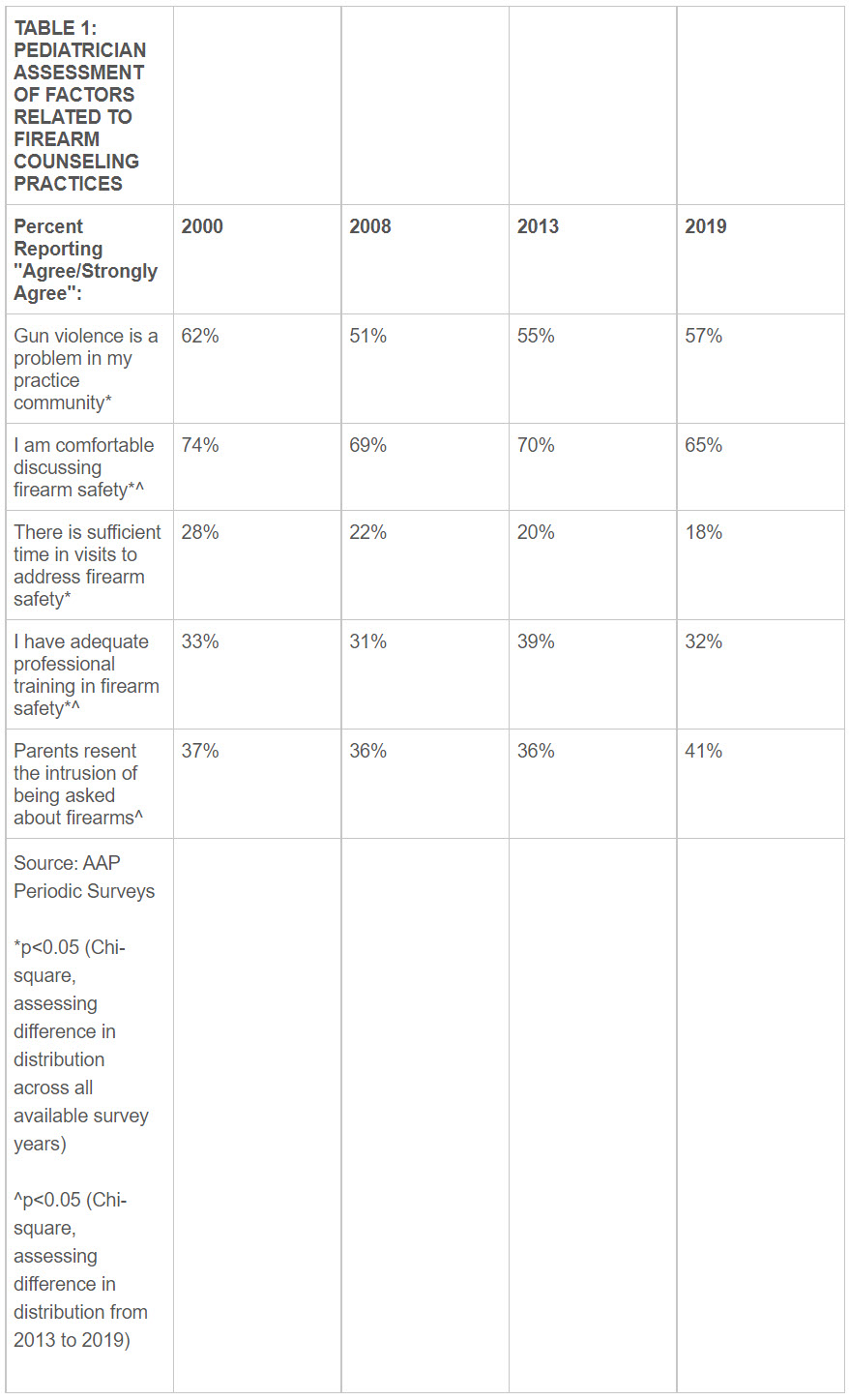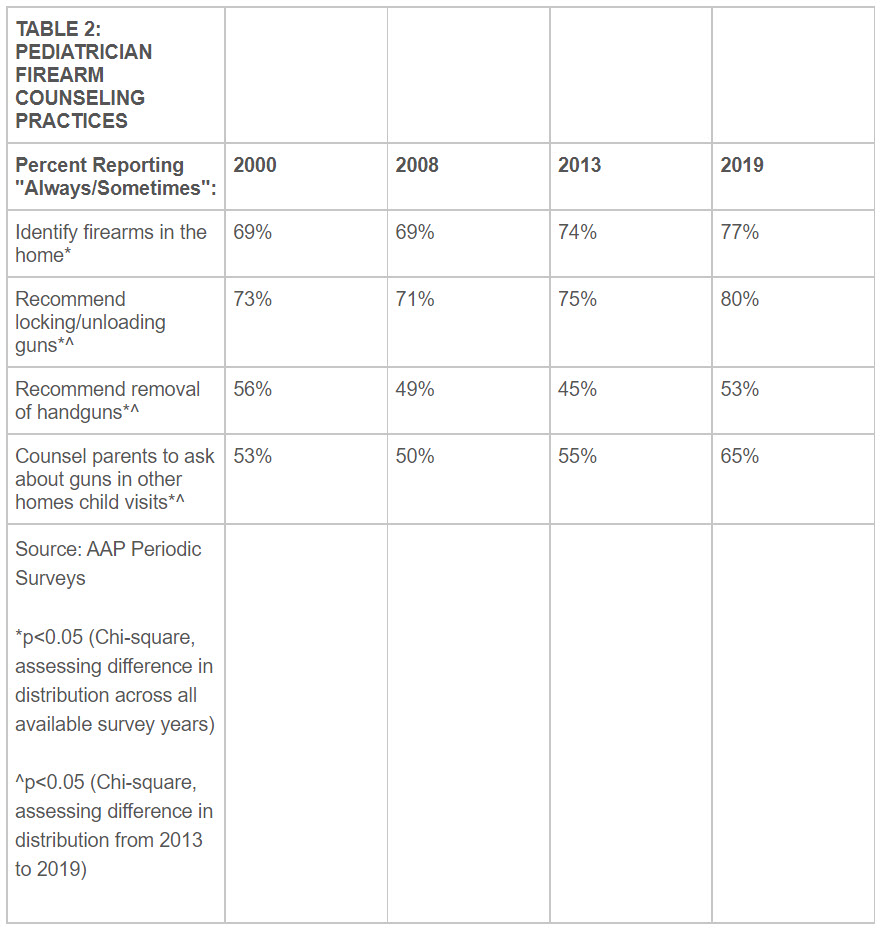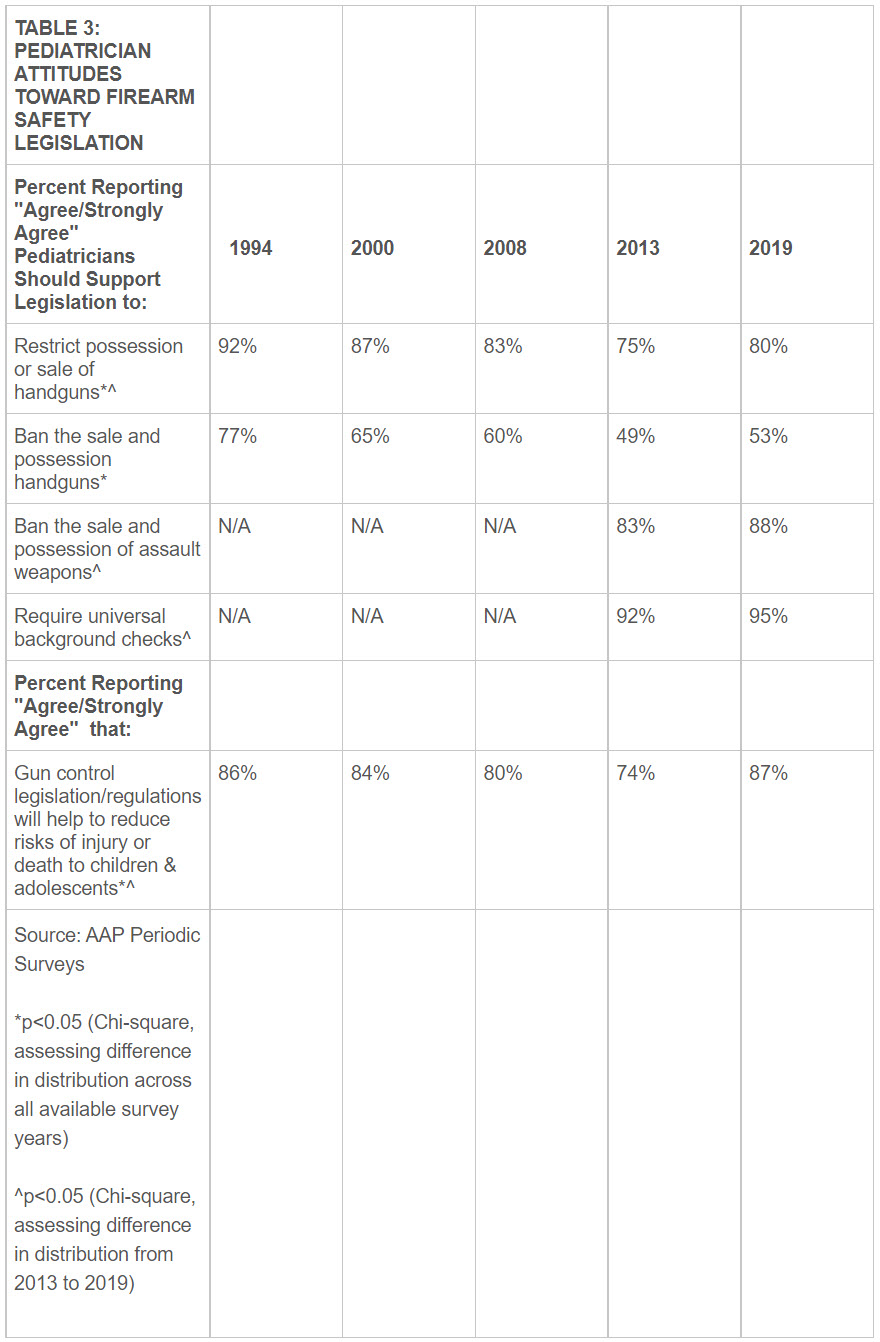Olson LM, Sisk B, Kaufer Christoffel K, Barkin S, Hoffman B
Accepted for 2020 Pediatric Academic Societies Annual Meeting
Background: Since the 1990s, pediatricians have led in firearm injury prevention as advocates and clinicians providing care and counseling. Firearm injuries remain a leading cause of mortality, with over 3100 deaths of children and adolescents in 2016.
Objective: Assess trends from 1994-2019 on pediatric experience treating gun injuries, providing counseling, and attitudes toward legislative options.
Design/Methods: National random sample Periodic Surveys of AAP members in 1994 (n=982, response rate=69%), 2000 (922, 62%), 2008 (853, 55%), 2013 (654, 44%), 2019 (597, 41%); analysis restricted to respondents in direct patient care. Topics: attitudes toward violence as a priority, clinical experience treating gun injuries, own counseling practices, and attitudes toward legislative options. Items on counseling were not available in 1994. New items on legislation added in 2013 & 2019. Chi-square assessed changes across years.
Results: VIOLENCE PREVENTION AS PRIORITY: In all years, high portions of pediatricians, 90% or more, reported that violence prevention should be a pediatric priority.
TREATMENT & COUNSELING: In 2019, 14% of pediatricians treated or consulted on one or more gun injuries in the past 12 months; ranging from a high of 20% (1994) to a low of 12% (2008). A majority, 65% in 2019, report they are comfortable discussing firearm safety; the rate has not increased over time. Rates of reported barriers to counseling remain similar, ie, inadequate training, lack of time during visits, and perceived parent resentment (Table 1). From 2000-2019 there was a modest increase in pediatricians' own reported counseling practices (Table 2), eg, those reporting they always/sometimes identify if there are firearms in the home increased: 69% (2000) to 77% (2019).
ATTITUDES TOWARDS LEGISLATION: Across all surveys, 84+% report they believe legislation/regulation will help reduce injury or death, and 90+% support legislation to hold gun owners responsible for child use of guns (Table 3). Over time, support for handgun bans has declined. Support to ban assault weapons and universal background checks (survey options added in 2013 & 2019) is high.
Conclusion(s): Firearm injury prevention remains a high pediatric priority. The results can inform the profession's ongoing work to address as clinicians and as advocates. Changes in views on legislative options may reflect evolution in laws and public debate. Reported ongoing barriers to providing preventive counseling point to obstacles that remain to be better understood and addressed.



Last Updated
05/20/2020
Source
American Academy of Pediatrics